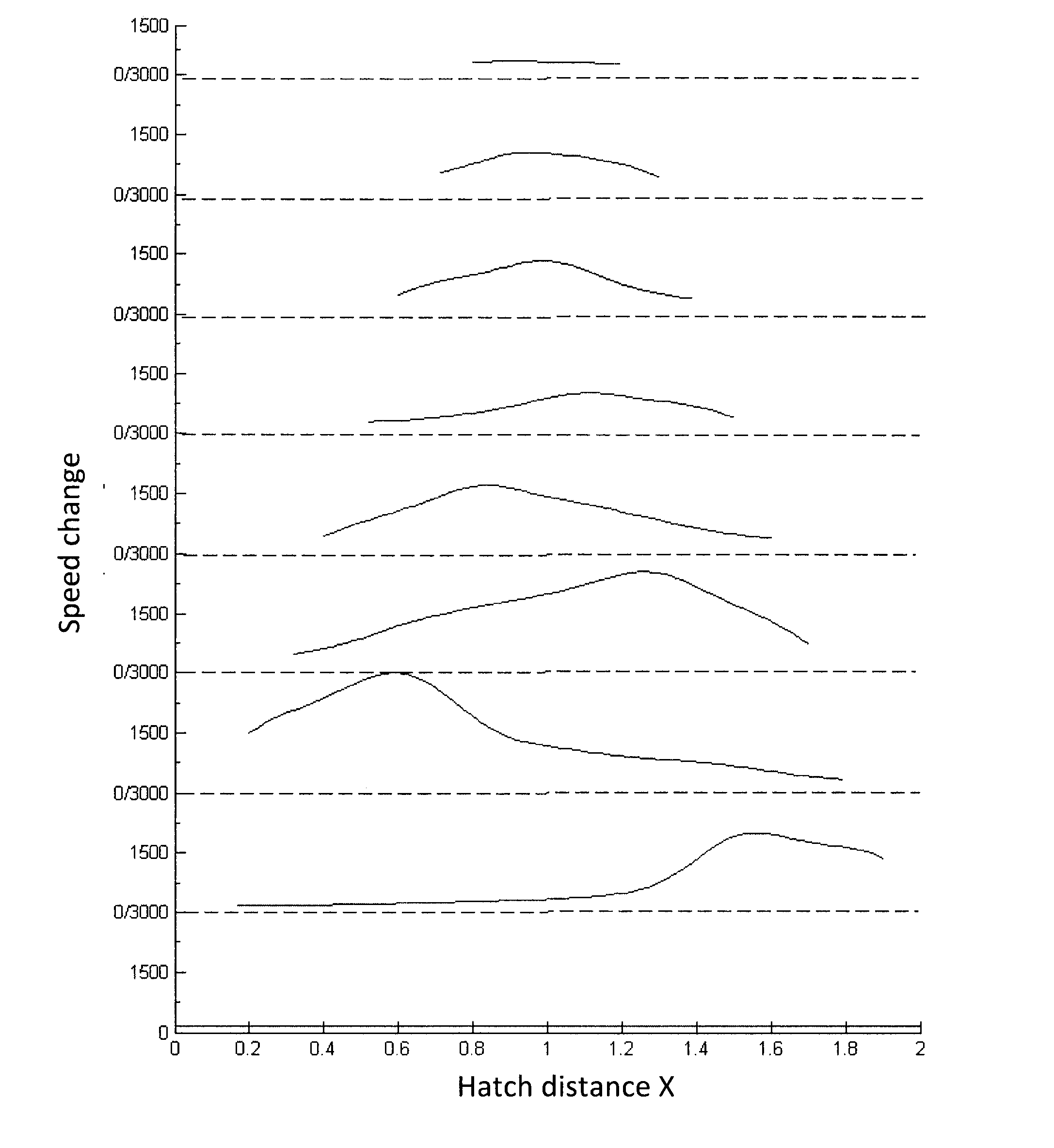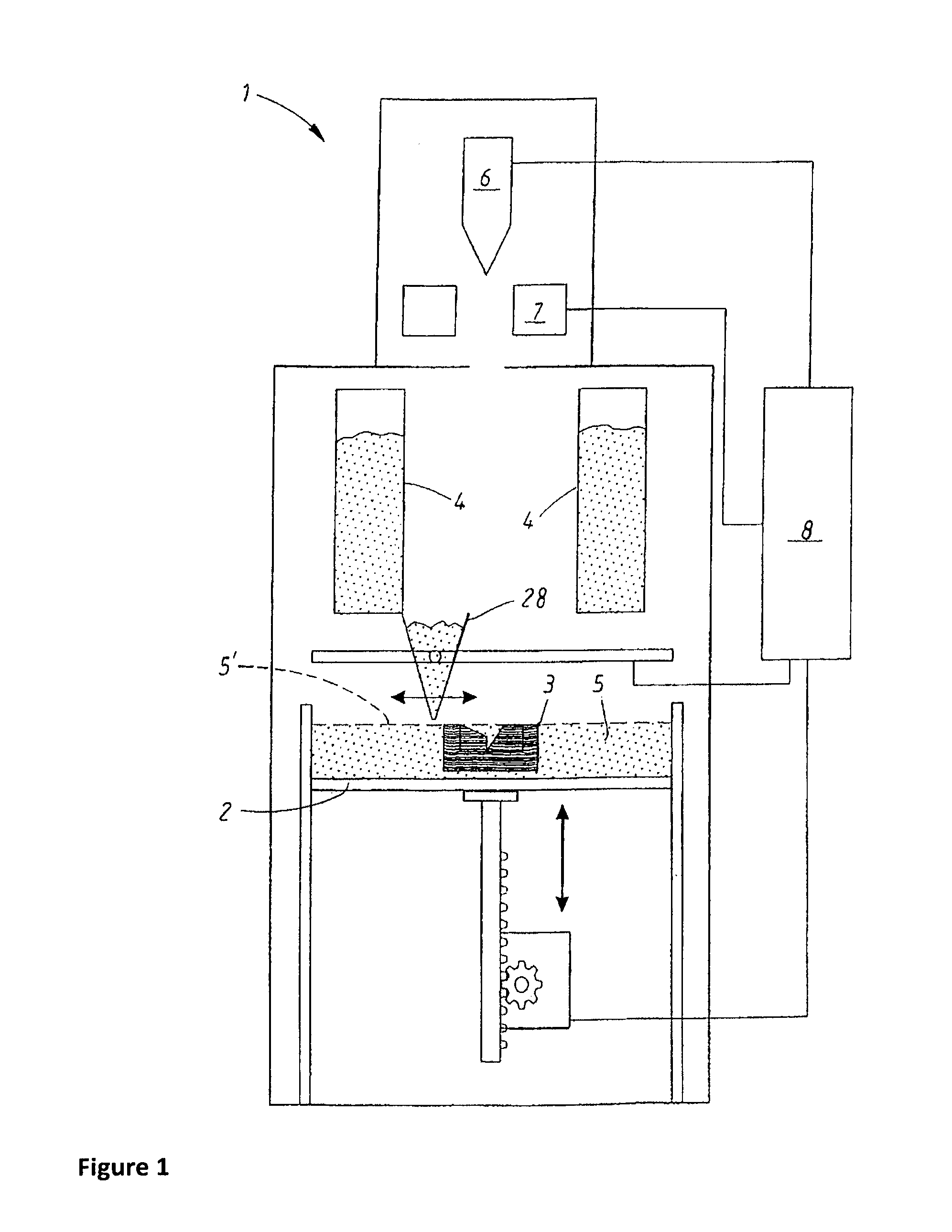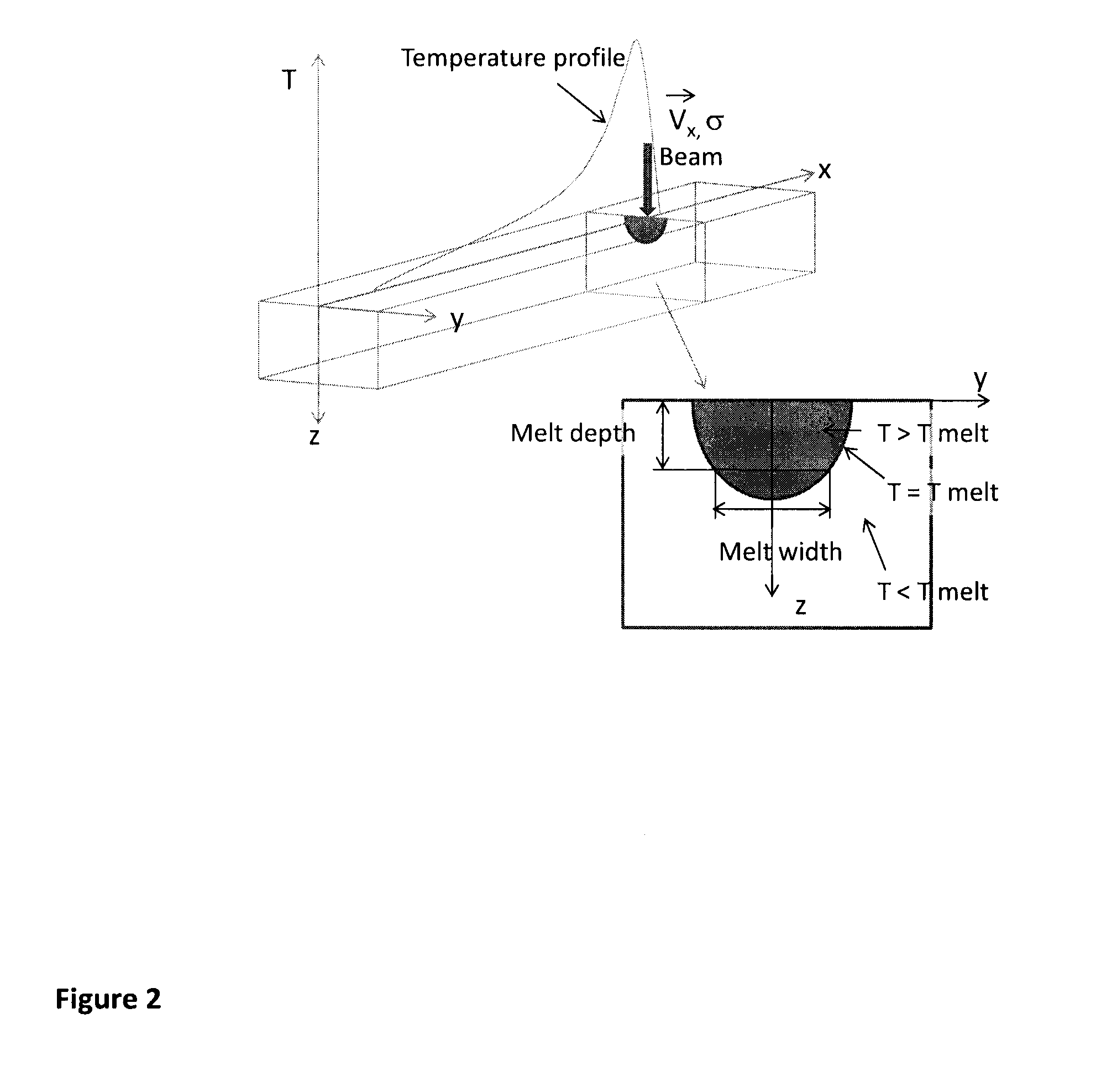Method for production of a three-dimensional body
a three-dimensional body and production method technology, applied in the direction of additive manufacturing processes, electric/magnetic/electromagnetic heating, instruments, etc., can solve the problems of difficult real-time correction or control of beams based on input from such cameras, difficult to perform properly, and may require more complex scan patterns. , to achieve the effect of improving product properties, reducing stress, and speeding up production
- Summary
- Abstract
- Description
- Claims
- Application Information
AI Technical Summary
Benefits of technology
Problems solved by technology
Method used
Image
Examples
example
[0103]In the following hatch example (cf. FIG. 7) a trapezoid will be melted with a constant beam power and it will be the beam speed that is varied in order to have constant melt depth and melt width. The intended beam path is such that the beam starts to scan the lines in FIG. 7 from the bottom to the top by altering the direction from left to right to right to left.
[0104]The spot size has been optimized for Tsurf, the temperature in the part prior to fusing, such that the maximum temperature in the melt pool is limited to Tmax. This means that the first hatch line is scanned with a constant speed and a fixed spot size. All the other lines are scanned with the same spot size and power but with different and varying speeds. The speed in each point of calculation distributed along the intended beam path is obtained by first calculating the temperature distribution around the point and then from speed versus temperature data in the data base. The speed in the data base has been optim...
PUM
| Property | Measurement | Unit |
|---|---|---|
| areas | aaaaa | aaaaa |
| energy | aaaaa | aaaaa |
| area | aaaaa | aaaaa |
Abstract
Description
Claims
Application Information
 Login to View More
Login to View More - R&D
- Intellectual Property
- Life Sciences
- Materials
- Tech Scout
- Unparalleled Data Quality
- Higher Quality Content
- 60% Fewer Hallucinations
Browse by: Latest US Patents, China's latest patents, Technical Efficacy Thesaurus, Application Domain, Technology Topic, Popular Technical Reports.
© 2025 PatSnap. All rights reserved.Legal|Privacy policy|Modern Slavery Act Transparency Statement|Sitemap|About US| Contact US: help@patsnap.com



